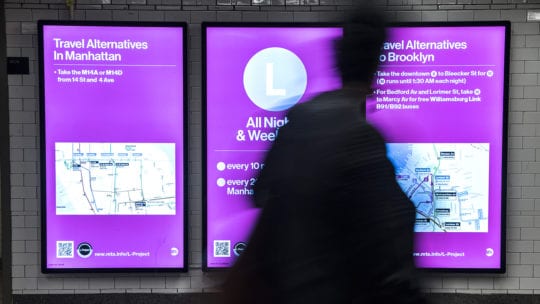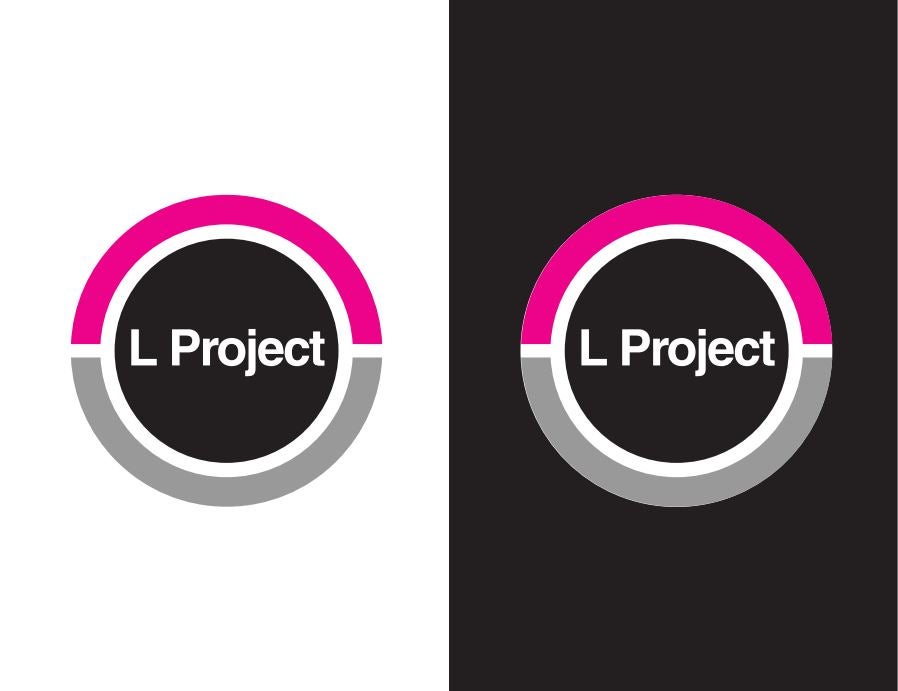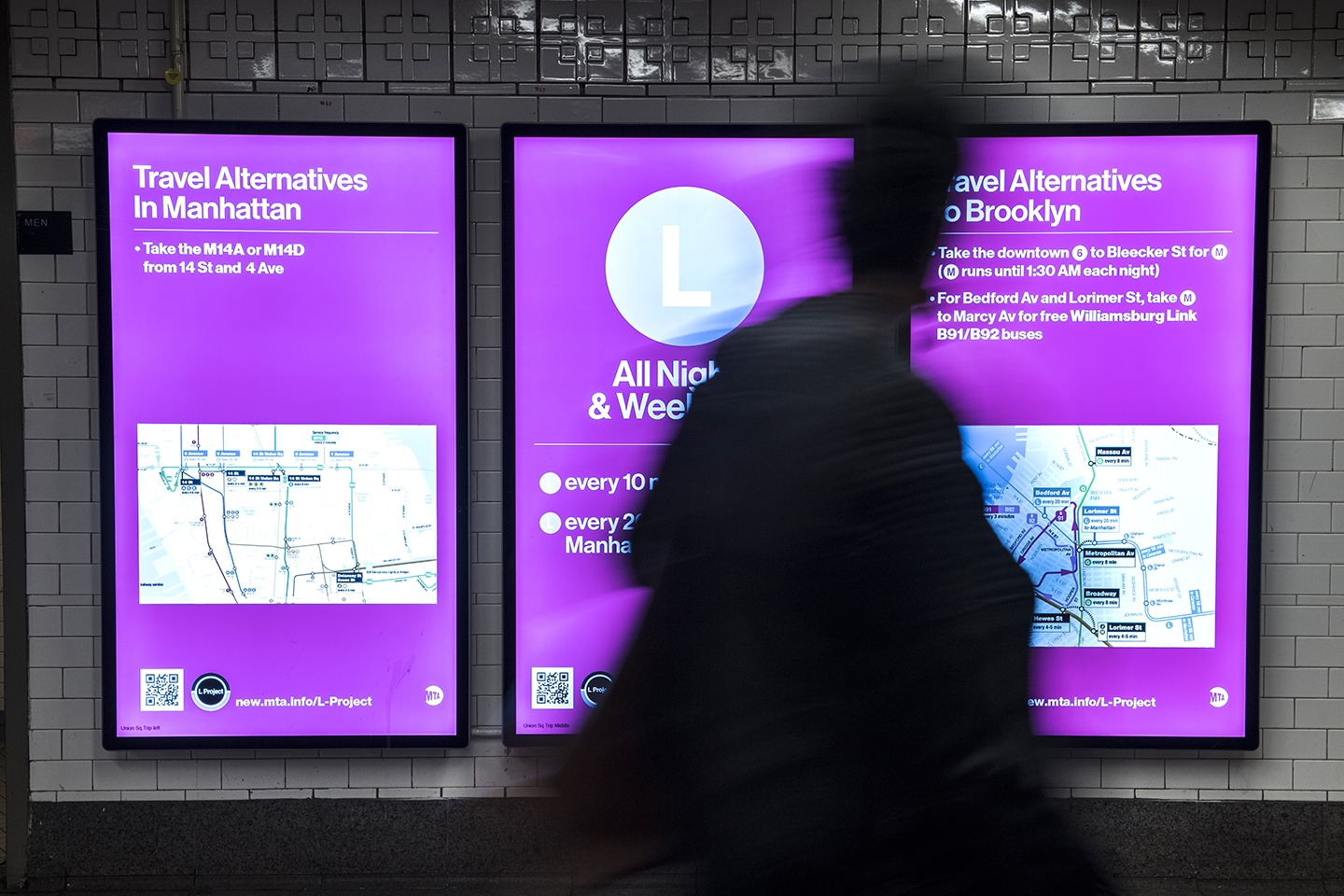

An E-letter Like No Other
A hot pink color scheme. Unique photographs of never-before-seen underground tunnels. No, it’s not Berlin’s hottest dance club. It’s…a newsletter about an urban construction project.
“The L Project” at the Metropolitan Transit Authority/New York City Transit (MTA) is not your run-of-the-mill newsletter operation. Launched as an information vehicle for a post-Hurricane Sandy construction project impacting more than 200,000 New York City subway commuters, the weekly e-letter, published every Saturday, informs, entertains and offers a behind-the-scenes look at one of the MTA’s largest construction projects to date.
PRNEWS readers have seen the following question addressed previously: How does one make communication about infrastructure interesting and accessible? Oh, and while you’re at it, how about boosting the reputation of the brand, the largest transit agency in North America?
Kaitlin McCready, director of special projects, strategy and customer experience at New York City Transit, was tasked with answering those questions.
Background: Re-building the L-Train

Director, Special Projects, Strategy and Customer Experience
NYC Transit
In 2016, hundreds of thousands of New Yorkers living along the L train line discovered their primary transport hub would be out of commission while the MTA made repairs. As a result of Hurricane Sandy in 2012, the tunnel through which the L train runs from Canarsie, Brooklyn, to the West Side of Manhattan, was flooded with 7 million gallons of water.
The MTA held months of in-person workshops and hearings with commuters and residents along the L train line to receive customer feedback and offer updates.
The MTA's main communications stream was service-related. Instead of simply notifying customers of service changes in real-time, McCready wanted to create “a proactive communications channel.”
Tactics: A Distribution Strategy
At workshops and hearings, McCready found her primary audience for L Project updates. It included workshop attendees. In addition, it was riders who failed to attend, but who had submitted comments and concerns online.
McCready’s team started using digital tools to reel in readers, bringing an AppleiPad to public hearings so those interested could sign up for the mailing list.
McCready’s team chose Mailchimp as the newsletter vehicle: “It’s really accessible, and helped us meet our goal of keeping people engaged,” she notes. But easy distribution was only the beginning. A project on this scale required true people power.

A Newsletter Team is Born
Since Nov. 2018, McCready has been in charge of creating and executing on The L Project newsletter strategy, all while guiding her group, which she affectionately refers to as “a team of doers.” She edits the newsletter and writes much of the content. “Even leadership is willing to step in and get the work done,” she says.
McCready loops in a marketing project manager, graphic designer and members of the MTA’s service information staff to “create a strategy and empower people to do what they’re best at. We have a lot of smart people working here, and it’s my job to give them strategy and context.”
McCready also scouted newsletter-worthy talent across departments, including an in-house photographer already tasked with capturing the MTA’s other major construction projects and a staffer who had worked at a local newspaper.
In-House Newsroom
“One of our photographers goes out every other week with a schedule from me of what moments in time to...capture,” McCready says. The goals of the imagery are to show the “before” and “after” of construction, as well as what it looks like in the course of the work. “Unfortunately, we can’t have [consumers] walk the tracks, so the best thing we can do is to show people what was happening progress-wise.”
When McCready needs an image on the fly, she gives her field team brief guidelines on how to capture images and hold their phones correctly. “Creating a mini-marketing team out of everyone” helps the MTA produce visuals cheaply.

Color Coding
McCready’s collaborative style led to the decision to make hot pink the L Project’s color theme. New York City’s subway system uses colors, numbers and letters to denote subway lines. Unlike other cities, however, “We do not describe the lines by color. You don’t call the L the grey line; we needed a dedicated brand.” Colors, says McCready, help commuters navigate and know what train lines connect. They also help customers associate service changes on other train and bus lines with the L Project.
The pink color scheme also proved useful when other train lines started increasing frequency and length over the weekend, standing in for L train service.
“We wanted to connect the dots; to communicate with people in a way that was connected to the project. So, we did a campaign using pink [text] about using [M train] service instead. It’s not a color used in our system anywhere else, which made it easy, and our design experts know pink and grey go nicely,” says McCready.
Before signage was printed and graphics went live, there was a feedback loop: “We came up with the [visual] brand internally. I worked with a graphic designer, got feedback from our chief customer officer and worked with our design team. They asked questions and came back with different options,” she says. Offering this level of buy-in helps her cross-departmental team stay motivated and engaged in the project.
What’s in a Name?
The team had begun building a visual brand, but landing on a name proved tricky. Why “The L Project,” and not “L Construction,” “L Tunnel Rehab,” or something to that effect? The decision came down to some smart media monitoring by McCready.
Unfortunately for the MTA, the local news media had preemptively begun reporting the project as the “L Shutdown,” (or in some cases, the “LPocalypse”). Tasked with creating clarity for worried commuters, McCready took to Google Trends to see how often the search term “L train shutdown” was being used as compared to “L Train construction,” “L Train rehabilitation” and other variants. “The ‘L Train Shutdown’ got glommed onto very early, which was unfortunate because only part of it was shutting sown, and a lot of people thought they were losing their train,” McCready recalls.
Her research suggested that the previous title of the project, “L Tunnel Reconstruction,” wasn’t sticking. “I knew we had to dramatically change the name to create more clarity. That’s why we changed and shortened it,” she says. Her efforts were successful: The move successfully increased “L Project” search volumes compared with “L train shutdown.”
Editori-‘L’ Calendar
McCready makes heavy use of an editorial calendar in long-term L Project planning, useful for looking ahead to construction changes and service-disrupting holidays. For instance, she knew that both the 4th of July and Pride Month would bring service changes that impacted L train riders; those events were plugged into the calendar far in advance.
The editorial calendar is also McCready’s North Star when it comes to the day-to-day. “It’s my go-to item. I check it daily to see what coming up, make additions and edit.” On Mondays, McCready meets with a second writer to chat informally about the e-letter, brainstorming and discussing what’s coming up in the week’s coverage.
In terms of translating content across channels, “it always starts with the newsletter, which I have to write the most text for,” she says. That content is then replicated across social media and on the MTA website.
Opportunities in the Climate-Crisis Era
As of this writing, the L Project continues, with most of the construction, er, on track and ahead of schedule. Like so many PR pros on deadline, McCready’s team always seems to be racing the clock.
“We have to be timely and relevant and on top of everything going on in the system.” This means taking an unflinching, all-encompassing look at the entire run of the 475,000-commuter train line. “If you don’t mention something, it seems weird; so you want to include everything.”
McCready relishes the challenge. As extreme weather continues to strike New York City’s century-plus-old subway system, she finds new ways to insert the L Project’s wins into the MTA’s daily communications.
“Recently there was a major rainstorm. We were going to do a different, evergreen story; instead, we talked about how we manage water drainage, looking at the L tunnel.”
As climate change brings on extreme weather events with increasing frequency, communicators in the public sector and beyond would do well to follow McCready’s example with waterproof communications plans of their own.
CONTACT: SMaerowitz@prnewsonline.com
